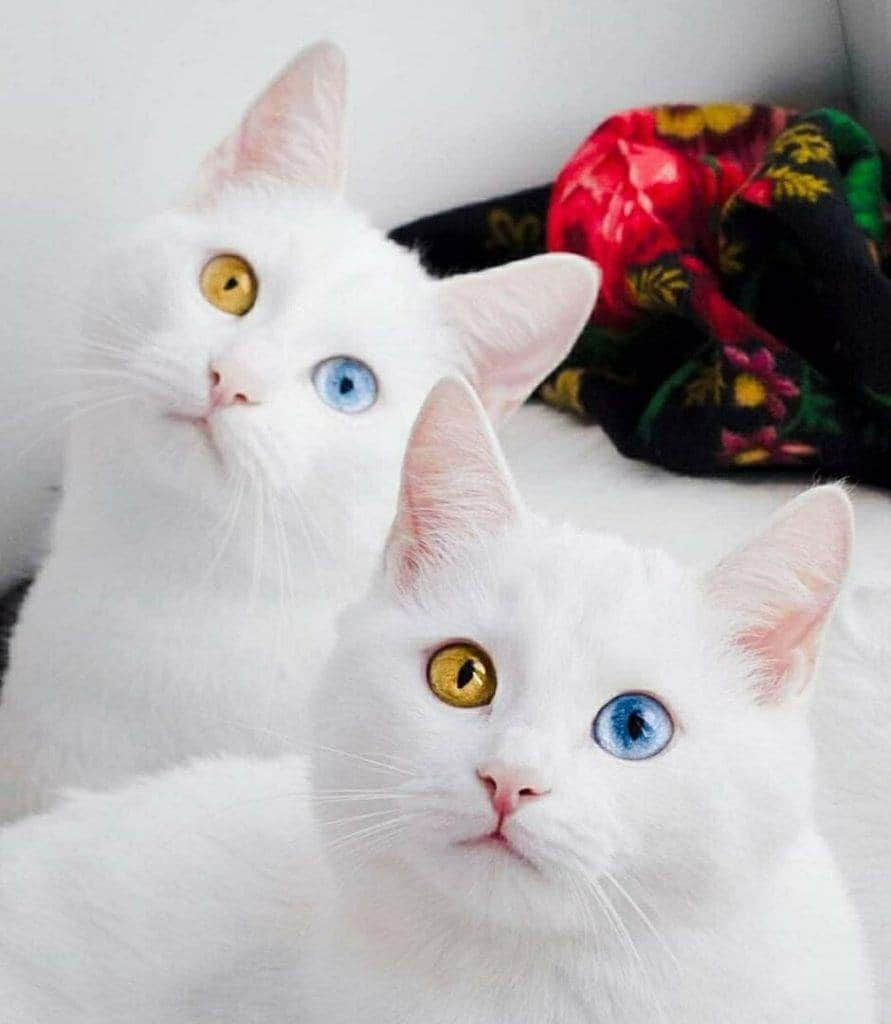Cats seem to have endless ways of fascinating us and capturing our attention. And while bringing us “gifts” might be near the top of their quirky list, nothing sparks mystical stories, folklore, and artwork like their glowing green (or yellow) eyes.
Cats’ eyes glow in the dark because unabsorbed light is bouncing off the tapetum lucidum (a unique mirror-like structure) and reflecting at us. While we don’t have this night-enhancing feature, other animals do. Here’s what else you should know about the glowing eyes of cats and what to do if your cat’s glowing eyes have dimmed.
What Does It Mean When Cats’ Eyes Glow
Glowing eyes (AKA eyeshine) play a crucial role in their ability to navigate and spot critters or predators in low-light conditions, such as at dusk and dawn when cats are most active. And technically speaking, says Dr. Iram Sharma, DVM and veterinary author, “cats’ eyes don’t ‘glow,’ they reflect the light from the outside world.” To understand why cats have eyeshine, first, we need to understand cat eye anatomy.
How do cats’ eyes work?
They might look wildly different than ours, but cats’ eyes share a lot of similarities with human eyes. The small differences, however, make a big impact on a cat’s hunting abilities.

Image credit: Nevena1987 | iStock
Light enters the eye. First, light enters the eye through the cornea, which bends the light for better focus and passes it through the pupil. This is true for cats and humans, but you’ve likely noticed our pupils differ. Cats’ pupils are bigger, sometimes vertical, and cats can change the shape of and dilate their pupils much faster than some other species.
Light filters onto light-sensitive cells. Next up is the lens, which focuses the light onto the retina where light-sensitive cells (photoreceptors) are located. They’re the same light-sensitive cells we have—rods (light absorbing) and cones (color absorbing). But cats have more rods and fewer cones than we do.
Unabsorbed light bounces off a special structure, filtering onto light-sensitive cells again. Thanks to the reflective surface of the tapetum lucidum (a layer of tissue at the back of the eye), rods and cones get a second chance at absorbing light. If you’re wondering if humans have tapeta lucida, the answer is no and that’s why our eyes don’t glow. But cats, dogs, cows, sheep, and even bullfrogs have tapeta lucida.
Signals are sent to the brain. Now that rods and cones have done their work (twice), they send signals to the brain via optic nerves. Then, the brain forms images.

Image credit: sdominick | iStock
Why do cats’ eyes glow?
Ever taken a photo only to realize you’ve been struck with the unfortunate red eye? That’s a reflection of your eye’s blood vessels reflecting off the retina. A bright flash is one of the limited sources of light powerful enough to reflect off the retina and cause a glow-like look.
But cats practically look like they have tiny flashlights beaming from their eyes. Cats (and a handful of other animals) have glowing eyes because they have a tapetum lucidum, unlike us. When you see eyeshine, that’s unabsorbed visible light bouncing off the tapetum lucidum, missing the photoreceptors, and exiting the eye. The feline tapetum lucidum is extra special because it’s made of riboflavin, a type of vitamin B that amplifies light to a specific cat-friendly wavelength.
Most cats have an eyeshine that is green in color, but cats’ eyes can also reflect white or blue. And unlike other cats, most blue-eyed kitties and albino cats produce a red eyeshine.

Image credit: drbimages | iStock
How Well Can a Cat See in Daylight?
Cats don’t have perfect vision at night, but it’s far better than their daytime sight. Having a tapetum lucidum has its perks for dawn and dusk mouse hunting. But it reflects light in different directions, making daytime images blurrier.
“Cats see their surroundings sharply [in daylight] only when they’re about 20 feet away,” Dr. Sharma says. In comparison, normal-sighted humans can see objects clearly from about 200 feet away.
And because they have fewer cones, they see a limited number of colors. We can’t ask what their favorite colors are, but it’s thought that cats see the world in shades of blue, gray, green, and yellow.

Image credit: woolzian | iStock
What If My Cat’s Eyes Don’t Glow In The Dark?
If your cat’s eye (or eyes) used to glow and aren’t anymore, their tapetum lucidum may have been damaged by injury or infection. Conditions such as high blood pressure, cataracts, glaucoma, growths, toxicity, and vitamin deficiencies can all impact your cat’s normal vision.
According to Dr. Sharma, being born with a genetically damaged tapetum lucidum isn’t common among cats. Although she adds, “some cat breeds have brighter and some less bright eye shine.” Studies suggest that Siamese cats may have weaker eyeshine than others.
A cat’s breed isn’t the only determining factor when it comes to their brightly—or not-so-brightly—shining eyes. “The quantity of riboflavin and zinc found in a cat’s pigment cells is the main factor for the color of the glow and the [brightness of the] glow,” Dr. Sharma explains.
Takeaway
A cat’s eyes should glow in the right conditions. Depending on how the light shines into the eye, you might not spot your cat’s eyeshine. So, if you’re peeping through the pet cam, don’t be alarmed if you don’t spot two glowing green eyes right away.
But if your cat’s eyes never reflect light, something might be blocking light from making its way to the tapetum lucidum. Chances are that your favorite feline can’t see very well—or at all in low-light conditions. If you notice any changes in your cat’s eyesight or the physical appearance of their eyes, like unusual discharge or redness, it’s important to make an appointment with your vet.





